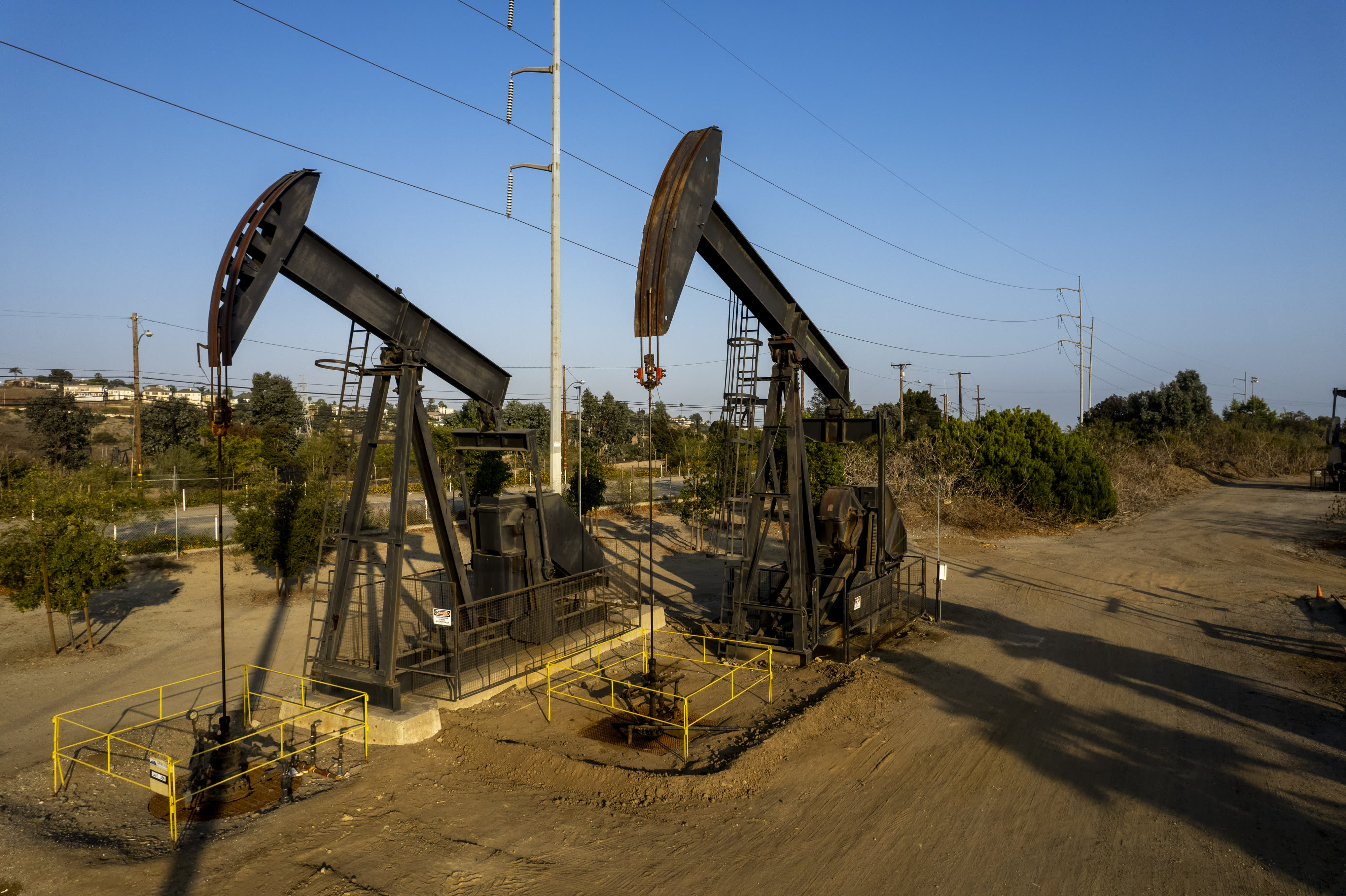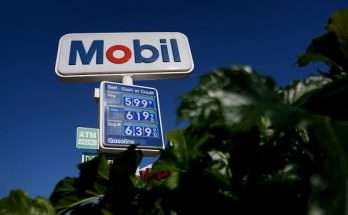
Oil derrick pumps operate at the Inglewood Oil Field in Culver City, California, on Sunday, July 11, 2021.
Kyle Grillot | Bloomberg | Getty Images
International oil benchmark Brent crude jumped during early trading on Tuesday morning, topping $80 per barrel for the first time since October 2018 before reversing those gains and dipping into negative territory. The breather comes after five straight positive sessions for oil, with the rally supported by demand rebounding as supply remains tight.
West Texas Intermediate crude futures, the U.S. oil benchmark, hit a more than two-month high of $76.67 per barrel before also pulling back. The contract last traded 0.8% lower at $74.86 per barrel.
Both WTI and Brent are coming off five straight weeks of gains, and each is up more than 50% for 2021.
“A persistent supply deficit is leading to an ever tighter oil market, with OECD inventories likely to end the year at the lowest level of demand cover in decades,” analysts at Barclays wrote Tuesday in a note to clients. The firm hiked its 2022 targets for WTI and Brent to $74 and $77 per barrel, respectively.
Brent last traded 0.9% lower at $78.80 per barrel. Goldman Sachs envisions the contract hitting $90 by the end of the year as demand continues to recover. The firm hiked its target on Sunday to $90 after previously forecasting Brent at $80 by the end of the year.
In April 2020 as the pandemic sapped worldwide demand for petroleum products, briefly sending WTI plunging into negative territory, producers implemented historic output cuts. OPEC and its allies removed nearly 10 million barrels per day from the market, and while the group has slowly opened the taps, the members are still holding back production.
A similar story played out in the U.S. Wells were shut-in and producers have been slow to kick up output. Instead, they’ve focused on shoring up balance sheets, paying down debt and returning money to shareholders.
Demand has since recovered amid the widescale rollout of the vaccine, all while supply remains constrained. This is especially true after years of under-investment in the sector.
Oil is also getting a boost amid the eye-popping rally in natural gas prices, which could prompt utilities to switch from gas to oil.
Natural gas futures jumped more than 9% at one point on Tuesday to $6.26 per million British thermal units, the highest level in at least 7.5 years. The contract is now up more than 40% for September with inventory below historical levels heading into the winter.
“Global natural gas markets are very tight now, with inventories much below normal in both Europe and U.S.,” said Ed Morse, global head of commodities at Citi. “Thus, prices should continue to stay at current elevated levels globally in the upcoming winter, with the potential for further price spikes triggered by much colder-than-normal weather, unless winter weather turns out to be mild.”
The energy sector is by far the best S&P 500 group for September, up more than 10%. The second-best sector is financials, which is up just 1%.
The Energy Select Sector SPDR Fund managed to hold onto its gains, and was up 0.5% at 11:30am on Wall Street.
Enjoyed this article?
For exclusive stock picks, investment ideas and CNBC global livestream
Sign up for CNBC Pro
Start your free trial now


